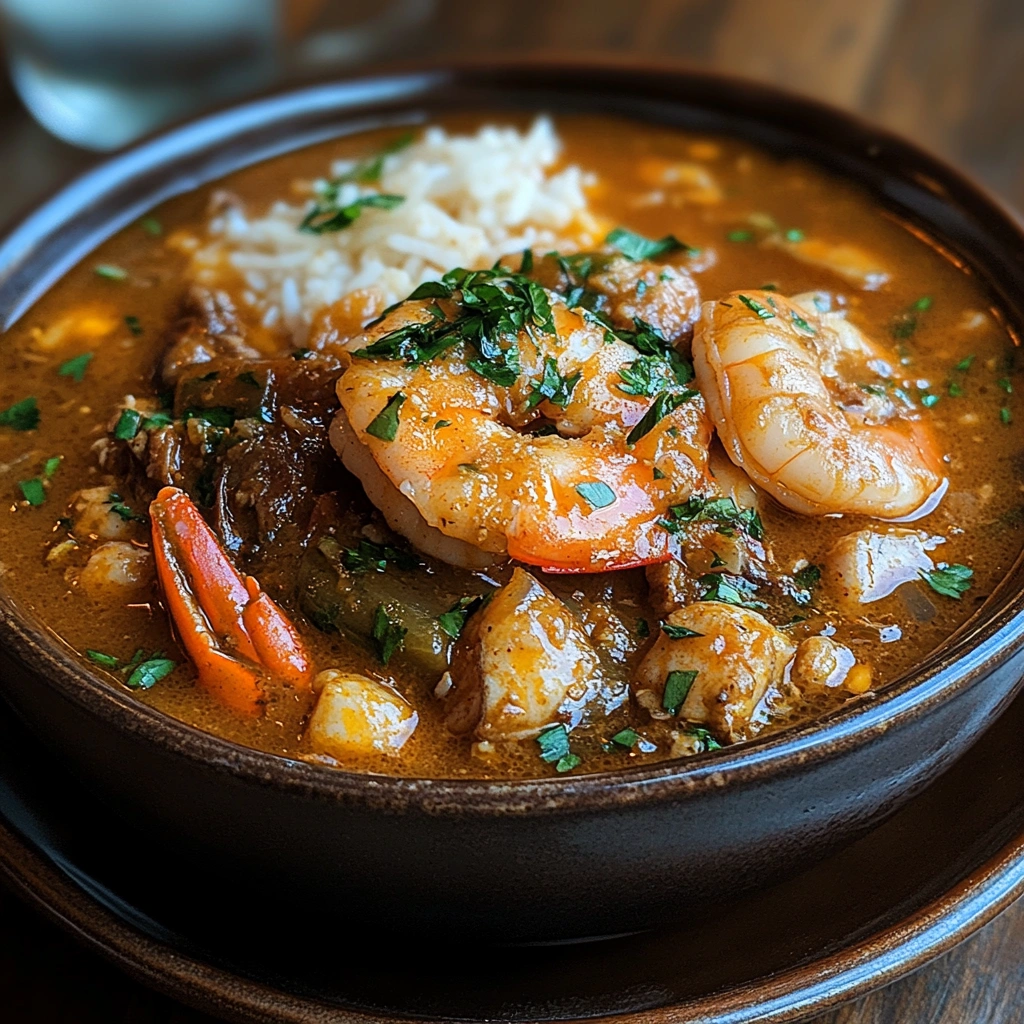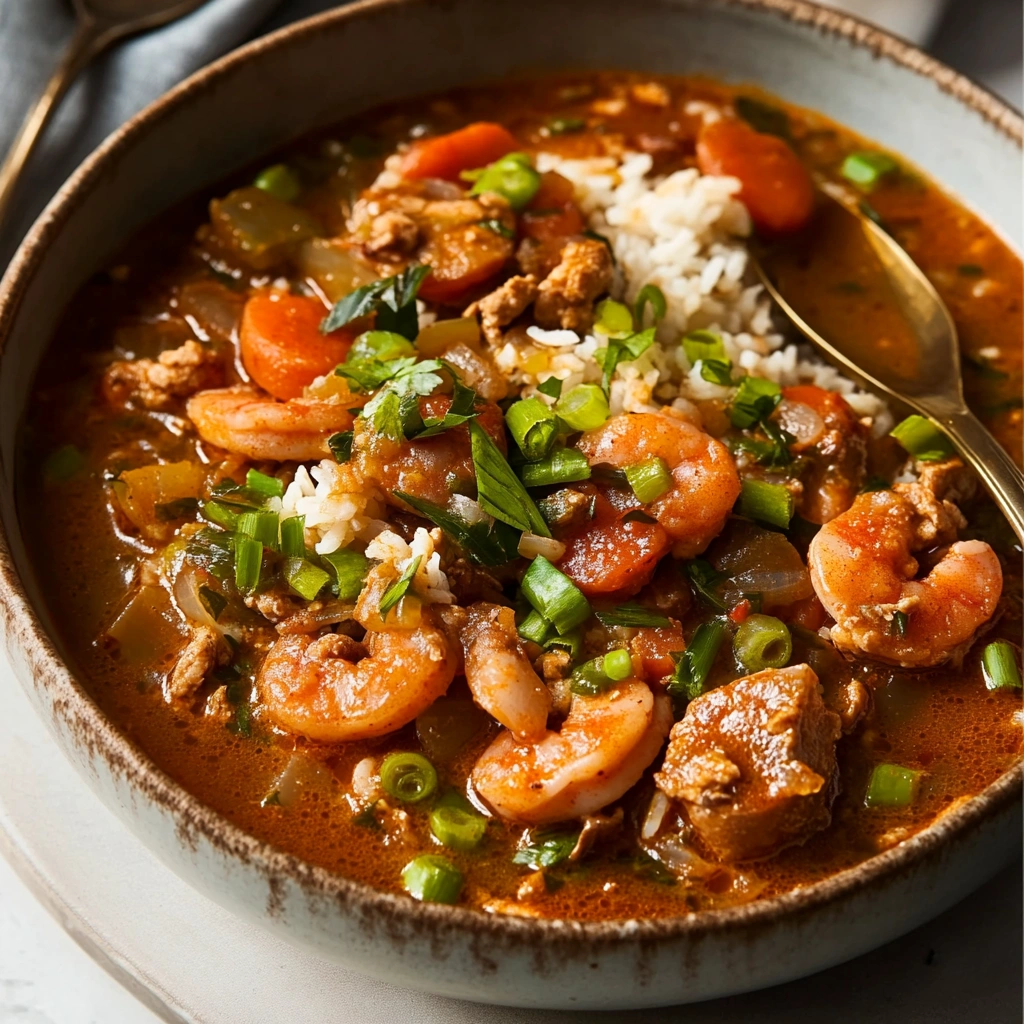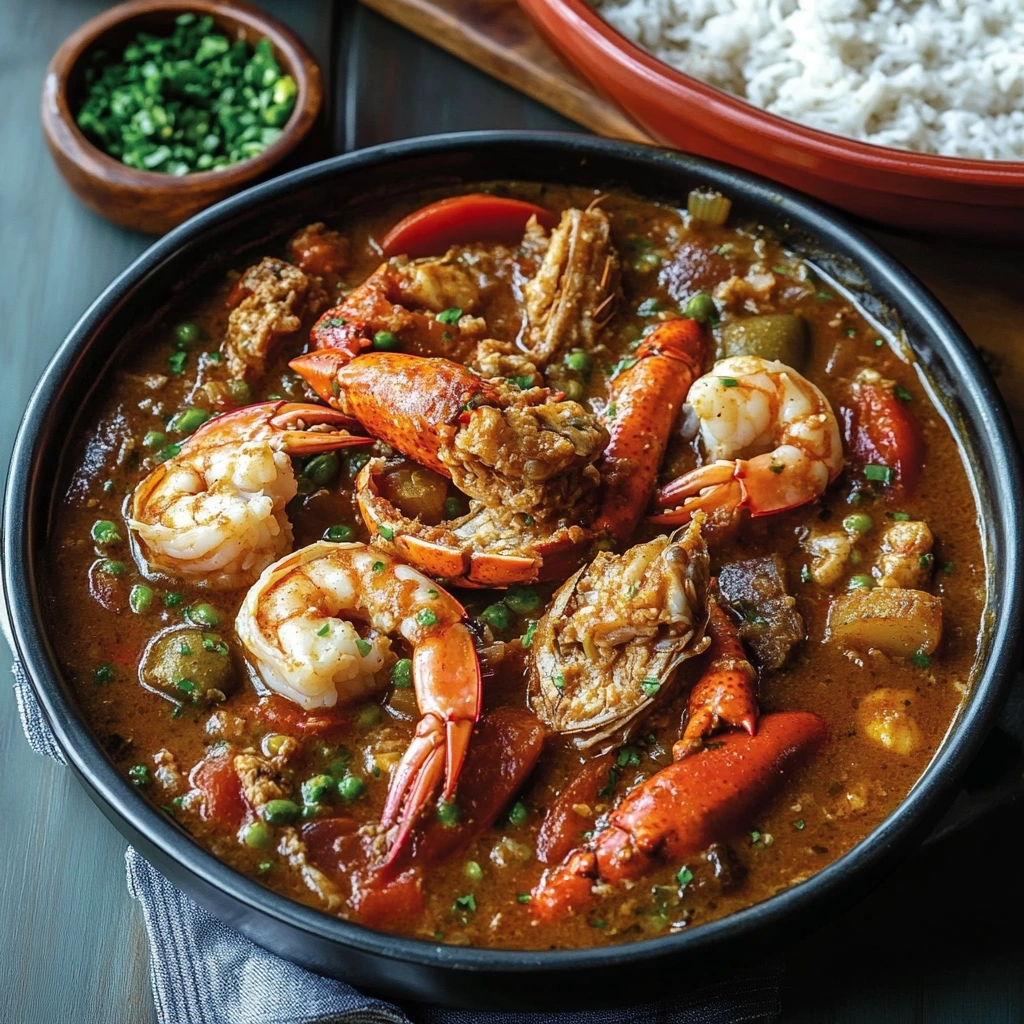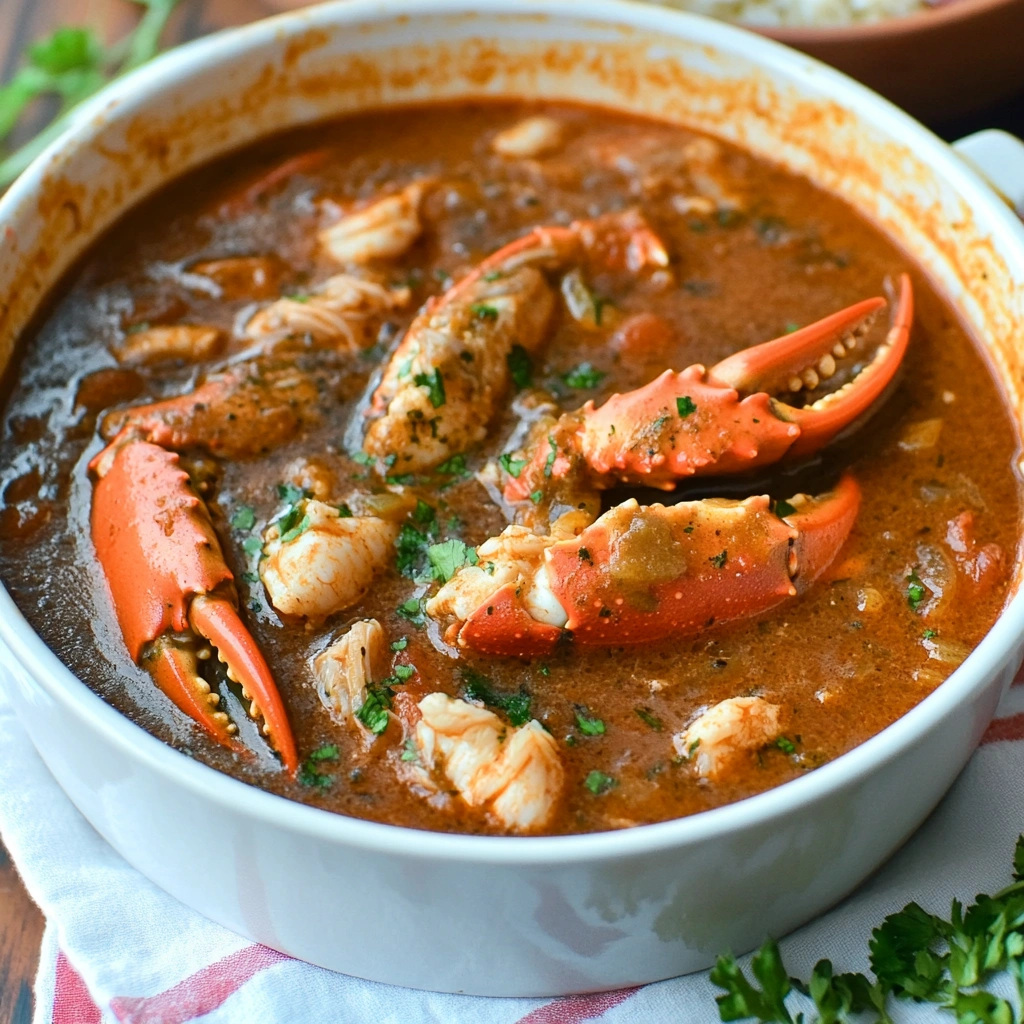Gumbo is more than just a dish—it’s a symbol of Louisiana’s rich culinary heritage, blending flavors from African, French, Spanish, and Native American traditions. This hearty, one-pot meal is famous for its bold spices, deep flavors, and signature thick consistency. Whether you prefer the smoky notes of a Cajun-style gumbo or the tomato-infused richness of Creole gumbo, one thing is certain: a well-made gumbo is the ultimate comfort food. In this post, we’ll share our tips for making the perfect gumbo.
At the heart of a great gumbo recipe is the roux, a slow-cooked mixture of flour and fat that gives the dish its distinctive color and nutty depth. Alongside the roux, the Holy Trinity of onions, celery, and bell peppers forms the flavor foundation, while proteins like chicken, andouille sausage, shrimp, or crab add layers of taste and texture.
In this guide, we’ll walk you through how to make the perfect gumbo, covering essential ingredients, step-by-step instructions, and expert tips to ensure your gumbo is packed with bold, authentic flavor. Whether you’re a seasoned cook or a beginner, this recipe will help you master the art of homemade gumbo like a pro!

What Makes a Perfect Gumbo?
The Difference Between Cajun and Creole Gumbo
Gumbo comes in two main styles: Cajun and Creole, each with distinct flavors, ingredients, and cooking techniques.
1. Tomatoes vs. No Tomatoes
- Creole gumbo includes tomatoes, giving it a slightly tangy, red-tinted broth.
- Cajun gumbo skips tomatoes, focusing on a deep, dark roux for a smoky, earthy flavor.
2. Roux and Thickness
- Cajun gumbo uses a dark, rich roux as its main thickener.
- Creole gumbo may have a lighter roux and is sometimes thickened with okra or filé powder.
3. Protein Choices
- Cajun gumbo favors chicken and andouille sausage, reflecting its rural roots.
- Creole gumbo often includes seafood like shrimp, crab, or crawfish, popular in New Orleans cuisine.
4. Seasoning and Spice Levels
- Cajun gumbo is bolder and spicier, with cayenne, smoked paprika, and black pepper.
- Creole gumbo features herbs like thyme, bay leaves, and oregano, offering a more layered seasoning.
5. Cooking & Serving
- Cajun gumbo is a one-pot dish, traditionally served over rice.
- Creole gumbo may be plated differently, sometimes with rice mixed in or served alongside bread.
Which One is Better?
It depends on your preference! If you love smoky, spicy flavors, go for Cajun gumbo. If you prefer a tomato-rich, seafood-forward dish, Creole gumbo is the way to go. Both are delicious, comforting, and true to Louisiana’s rich culinary heritage!
Key Ingredients for a Bold Flavor
A great gumbo is built on layers of rich, deep flavors, with each ingredient playing a crucial role.
1. Roux: The Heart of Gumbo
The roux (flour and fat cooked together) creates thickness and depth. A dark roux (chocolate-colored) gives the boldest flavor, requiring slow cooking and constant stirring.
2. The Holy Trinity: Flavor Base
Aromatic onion, celery, and bell pepper form the foundation, releasing savory sweetness into the gumbo.
3. Proteins: The Star of the Dish
- Chicken & Andouille Sausage – Common in Cajun gumbo, adding smoky heat.
- Seafood (shrimp, crab, crawfish, oysters) – Classic in Creole gumbo, bringing fresh coastal flavors.
4. Thickening Agents: Okra & Filé Powder
- Okra – Adds a mild, earthy thickness, often in Creole gumbo.
- Filé Powder – Ground sassafras leaves, stirred in at the end for extra body.
5. Broth & Seasonings
- Chicken or seafood stock – Forms the gumbo’s rich base.
- Paprika, cayenne, thyme, bay leaves, garlic – Essential for bold, layered seasoning.
Bringing It All Together
Mastering these key ingredients ensures a deep, flavorful gumbo, whether you prefer a smoky Cajun style or seafood-rich Creole version!

Step-by-Step Guide to Making the Perfect Gumbo
H3: Ingredients You’ll Need (with Exact Measurements)
| Ingredient | Quantity |
|---|---|
| All-purpose flour | ½ cup |
| Vegetable oil | ½ cup |
| Onion (chopped) | 1 large |
| Celery (chopped) | 2 stalks |
| Bell pepper (chopped) | 1 medium |
| Andouille sausage | 1 lb, sliced |
| Chicken thighs | 1 lb, cubed |
| Shrimp (peeled) | ½ lb (optional) |
| Garlic (minced) | 4 cloves |
| Chicken broth | 6 cups |
| Bay leaves | 2 |
| Paprika | 1 tsp |
| Cayenne pepper | ½ tsp |
| Thyme (dried) | 1 tsp |
| Okra (sliced) | 1 cup |
| Filé powder | 1 tsp |
| Cooked rice | For serving |
Cooking Instructions for a Flavorful and Perfect Gumbo
Follow these steps to create a rich, bold gumbo packed with deep flavors.
1. Make the Roux
- Heat oil in a heavy pot, add flour, and stir constantly for 15-30 minutes until it turns deep brown.
- Avoid burning—if it scorches, start over.
2. Sauté the Holy Trinity
- Add onions, celery, and bell peppers, cooking for 5 minutes until softened.
- Stir in garlic and cook for another 1-2 minutes.
3. Brown the Proteins
- Add andouille sausage, letting it release its smoky flavor.
- Brown chicken pieces if using.
4. Build the Broth & Simmer
- Pour in chicken or seafood stock and season with bay leaves, paprika, cayenne, and thyme.
- Simmer uncovered for 45 minutes, stirring occasionally.
5. Add Thickening Ingredients
- Stir in okra, cooking for 10-15 minutes.
- Add shrimp or crab in the last 5-10 minutes to prevent overcooking.
6. Finish & Serve
- Turn off heat, stir in filé powder, and remove bay leaves.
- Serve hot over cooked rice, garnished with green onions.
Pro Tip: Gumbo tastes even better the next day as the flavors develop!
Expert Tips for the Best Gumbo
How to Get the Roux Just Right
The roux is the foundation of a great gumbo, creating its deep, rich flavor and thick texture. Mastering the roux is essential for achieving an authentic, flavorful dish. Here’s how to get it just right.
1. Choose the Right Fat and Flour Ratio
A traditional roux is made with a 1:1 ratio of fat (oil, butter, or lard) to flour.
- Oil-based roux (vegetable or canola oil) – Best for Cajun-style gumbo, as it withstands high heat without burning.
- Butter-based roux – Adds richness but burns faster, so it’s better for lighter dishes.
Pro Tip: Stick with oil for a dark gumbo roux, as butter has a lower smoke point and may scorch.
2. Cook Over Medium Heat and Stir Constantly
Making a perfect roux requires patience!
- Heat oil in a heavy-bottomed pot over medium heat.
- Gradually whisk in flour, stirring continuously to prevent clumping.
- Keep stirring with a wooden spoon or whisk—never stop, as roux can burn quickly.
Pro Tip: If the roux burns (it will smell bitter), start over—a burnt roux will ruin the entire gumbo.
3. Watch the Color: Stages of a Roux
The longer you cook the roux, the darker it gets, which changes both flavor and thickening power.
| Roux Color | Cooking Time | Flavor Profile | Best Use |
|---|---|---|---|
| Blonde | 5-10 min | Light, mild, slightly nutty | Soups, light sauces |
| Peanut Butter | 10-15 min | Rich, buttery, slightly earthy | Stews, light gumbo |
| Brown | 15-25 min | Deep, toasty, nutty | Most gumbo styles |
| Dark Chocolate | 25-30 min | Bold, smoky, rich | Traditional Cajun gumbo |
For gumbo, aim for a dark brown or chocolate-colored roux for maximum depth of flavor.
4. Avoid Common Roux Mistakes
- Burning the Roux: If it turns black or smells burnt, discard it and start over.
- Cooking Too Fast: High heat can scorch the roux. Cook it slowly over medium heat for even browning.
- Stopping Stirring: Constant motion prevents lumps and burning.
5. When to Use the Roux in Gumbo
Once the roux reaches the perfect color, immediately add the Holy Trinity (onion, celery, bell pepper) to stop the cooking process and infuse flavor.
Pro Tip: If making roux ahead of time, let it cool and store in an airtight container for up to a week in the fridge or three months in the freezer!
Common Mistakes to Avoid
Avoid these key mistakes to ensure a rich, flavorful gumbo every time.
1. Rushing the Roux
- Cooking the roux too fast or not stirring constantly can cause burning.
- A dark brown roux takes 15-30 minutes over medium heat—don’t rush it!
Tip: If it smells burnt, start over—a bitter roux ruins the gumbo.
2. Skipping or Undercooking the Holy Trinity
- The onions, celery, and bell peppers must be sautéed properly to release their full flavor.
Tip: Add them immediately after the roux is done to slow cooking and enhance taste.
3. Overcooking Seafood
- Shrimp, crab, and crawfish should be added in the last 5-10 minutes to avoid toughness.
Tip: If making gumbo ahead, add seafood only when reheating.
4. Not Letting Gumbo Simmer Long Enough
- Rushing the cook time prevents flavors from blending.
- Gumbo should simmer at least 45 minutes, but longer (up to 3 hours) is better.
Tip: It tastes even better the next day!
5. Adding Filé Powder Too Early
- Cooking filé can make gumbo slimy—it should be stirred in after cooking.
Tip: Sprinkle on individual servings for best texture.
6. Overloading with Ingredients
- Too many proteins overwhelm the dish—stick to one or two (e.g., chicken & sausage OR shrimp & crab).
Tip: Season gradually and adjust as needed.
7. Serving Gumbo Incorrectly
- Gumbo should be served over rice, not mixed in (prevents mushiness).
Tip: If too thick, add broth; if too thin, simmer longer.

FAQs About Making the Perfect Gumbo
Gumbo is a beloved Louisiana dish, but making it just right can raise a lot of questions. Here are answers to some of the most common gumbo-related queries to help you achieve bold, authentic flavors every time.
1. What is the secret to a flavorful gumbo?
The key to a bold, rich gumbo lies in three things:
- A well-cooked roux – A deep, dark brown roux adds nutty, smoky flavor and thickens the gumbo.
- Slow simmering – Gumbo should cook for at least 45 minutes to 2 hours to let the flavors develop.
- Quality ingredients – Using fresh Holy Trinity (onion, celery, bell pepper), proteins, and seasonings enhances the dish.
🔥 Tip: Let gumbo sit for a few hours or overnight—the flavors get even better with time!
2. Can I make gumbo without a roux?
Yes, but it won’t have the same depth and richness. Alternatives to roux include:
- Okra – Naturally thickens the gumbo and adds a mild earthy flavor.
- Filé powder – Made from sassafras leaves, it thickens gumbo when added at the end.
🔥 Tip: For a gluten-free gumbo, try using gluten-free flour for the roux or rely on okra/filé for thickening.
3. Should perfect gumbo be thick or soupy?
Gumbo should have a slightly thick, stew-like consistency, but it shouldn’t be too thick or too watery.
- A good gumbo coats the back of a spoon without being pasty.
- If too thick, add more broth or stock.
- If too thin, let it simmer longer or add more roux, okra, or filé powder.
🔥 Tip: Cajun gumbo is usually thicker (due to dark roux), while Creole gumbo can be slightly soupier (due to tomatoes).
4. Can I make gumbo ahead of time?
Yes! Gumbo actually tastes better the next day because the flavors have more time to develop.
- Store in an airtight container in the fridge for up to 3 days.
- Freeze for up to 3 months—just thaw and reheat slowly on the stove.
🔥 Tip: If making seafood gumbo, add the seafood only when reheating to avoid overcooking.
5. Can I use store-bought stock for gumbo?
Yes, but homemade stock (especially seafood or chicken stock) adds more depth of flavor.
- Seafood gumbo – Use shrimp or crab shells to make a quick stock.
- Chicken & sausage gumbo – A homemade bone broth adds richness.
🔥 Tip: If using store-bought broth, choose low-sodium so you can control the salt level.
6. How do I prevent my gumbo from becoming too salty?
If gumbo gets too salty, try these fixes:
- Add more liquid – Dilute with extra broth or water.
- Potato trick – Drop a peeled potato into the gumbo while simmering—it absorbs some salt (remove before serving).
- Balance with acid – A splash of lemon juice or vinegar can counteract excessive saltiness.
🔥 Tip: Season gradually and taste as you go to avoid over-salting.
7. What’s the best way to reheat gumbo?
- Stovetop (best method): Reheat on low to medium heat, stirring occasionally.
- Microwave: Use short bursts of heating, stirring between intervals to ensure even reheating.
🔥 Tip: If the gumbo thickens too much after refrigeration, add a little stock or water while reheating.
8. Can I make a vegetarian gumbo?
Yes! Vegetarian gumbo replaces meat and seafood with plant-based ingredients like:
- Mushrooms – Adds umami depth.
- Smoked tofu or plant-based sausage – Mimics the smokiness of andouille.
- Extra okra and filé powder – Help thicken and add richness.
🔥 Tip: Use a vegetable broth base and bold seasonings to maintain traditional gumbo flavor.
9. What type of rice should I serve with gumbo?
White long-grain rice is the most traditional, as it absorbs the gumbo’s flavors without overpowering them. Other good options:
- Brown rice – Adds a nutty taste and extra fiber.
- Jasmine or basmati rice – Aromatic, but less common.
- Cauliflower rice – A low-carb alternative.
🔥 Tip: Cook rice separately and serve it under or alongside the gumbo to maintain the right texture.
10. How do I fix a burnt roux?
If the roux burns, there’s no fixing it—you must start over. A burnt roux gives gumbo an unpleasant, bitter taste that ruins the dish.
🔥 Tip: Stir constantly and use medium heat to prevent burning. If unsure, smell the roux—if it’s burnt, discard and start fresh.

Gumbo is more than just a meal—it’s a rich, flavorful dish that embodies the heart of Louisiana cuisine. Whether you prefer a smoky Cajun gumbo or a tomato-based Creole gumbo, the key to perfection lies in a well-cooked roux, slow simmering, and carefully balanced seasonings.
By mastering the dark roux, the Holy Trinity, and the right proteins, you can create a deep, bold flavor that only gets better with time. Don’t rush the process, and let the ingredients work their magic. Gumbo is all about patience, tradition, and bringing people together over a comforting, homemade meal.
Now that you have the tips, techniques, and step-by-step guidance, it’s time to grab your pot and start cooking. Try your hand at this authentic gumbo recipe, experiment with flavors, and enjoy a dish that’s meant to be shared and savored.
Tip: Gumbo always tastes better the next day—so don’t forget to make extra! https://www.easy1recipes.com/spicy-cajun-dirty-rice-a-quick-and-delicious-weeknight-dinner/
